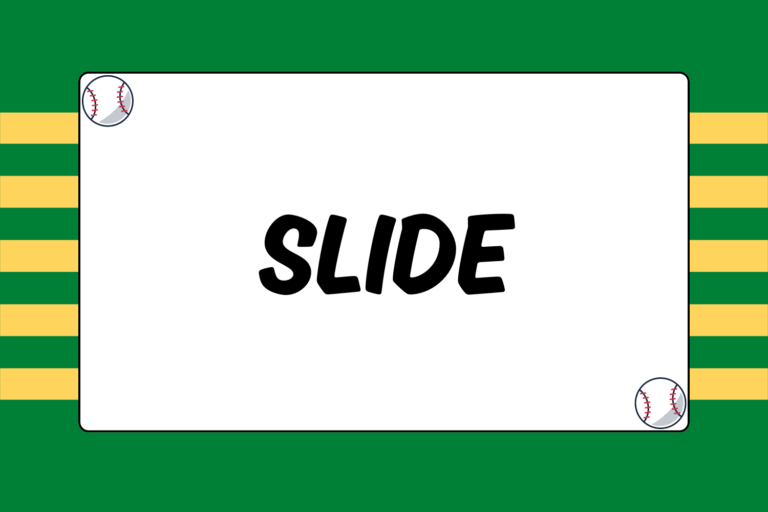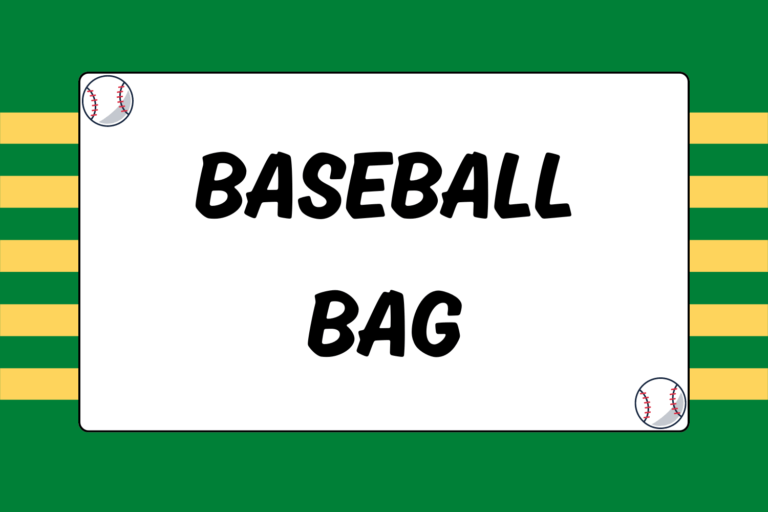The hit and run is one of the most basic offensive plays in the game. Its simplicity and value in certain situations means that teams utilize it at virtually every level of baseball. The hit and run is also a somewhat rare example of a “team” play in baseball. Specifically, multiple players have a role in the play and must rely on each other for it to succeed. Read on to learn the strategy behind the hit and run, as well as the proper technique for executing it in the batter’s box and on the base paths.
When to Hit and Run
The hit and run is often used in situations when the offense is trying to generate a spark of momentum (maybe because the team hasn’t been hitting well so far). The play is usually called with a runner on first base. It can be done with runners on first and second or first and third, but the latter is less common and a bit riskier. If executed correctly, it gives the runner an advantage because he basically gets a head-start on the base paths. In addition, it gives the batter an advantage because it opens up a big hole on the right side for him to aim for.
With the hit and run, it’s especially important to have a smart runner on the bases and a batter who can handle the bat. Here are a few situations where it might make sense to hit and run:
- To stay out of a double play: If there’s a good contact hitter at the plate, the hit and run is a good way to avoid a ground ball double play. Since the runner goes before the pitch, it’s nearly impossible to turn two. The play takes the bat out of your hitter’s hands to some extent, so it’s especially valuable with a batter who hits a lot of ground balls.
- To get a jump on the base paths: You want to start the runner early, but you don’t trust him to steal a base. The hit and run is a good way to “protect” a runner who doesn’t have exceptional speed, since there likely won’t be a play at second base.
- To advance the runner: Instead of squaring around and bunting to move the runner up, you send the runner early and try to hit the ball on the ground. If the ball goes through the infield, you’ll have runners on first and third and a chance for a big inning. But even if an infielder gets to it, the runner will advance and the only play will be at first base (which is the same as a sacrifice).
Base Runner’s Responsibility
The hit and run starts with the runner on first base. Your job is fairly basic — it’s simply a matter of avoiding major mistakes. Get your lead off of the base, and then take off for second once the pitcher delivers the pitch. Here are a few important points to keep in mind:
Make sure the pitcher goes home:
If there’s a good situation for a hit and run, the opponent will know it, too. Be aware that the pitcher might try to pick you off. You’re not trying to steal the bag straight up, so an outstanding jump doesn’t matter all that much. It’s okay to wait an extra instant to make sure the pitcher throws home before you go.
Take a peek:
After two or three strides, turn your head towards the plate and take a peek to see what happened. Did the batter hit the ball in front of you or behind you? Did he hit it on the ground or in the air? Worst of all, did the batter swing and miss or take the pitch? Depending on the outcome of the pitch, you may need to try for third base, slide into second, or stop and get back to first. Keep your ears open and listen to your coaches, but also try to catch a glimpse of the action.
Pick up your third base coach:
If the play is executed correctly and the batter hits it on the ground, you may or may not be able to see the ball (especially if it goes to right field). As soon as you hear the bat make contact, look up and find your coach. He can see the play, so he’ll make the decision whether to stop you at second base or bring you around to third.
Batter’s Responsibility
The hit and run is entirely predicated on the batter’s ability to hit the ball fair. How well he handles the bat and where he hits the ball will determine the play’s level of success.
Here are the most important points to keep in mind:
Don’t chase a pitch in the dirt:
The general rule on a hit and run is to swing no matter what. Whether it’s way outside, over your head, or the nastiest curveball you’ve ever seen, you need to swing and get the bat on the ball to protect the runner. However, you can exercise a bit of discretion. If the pitch is so low that it’s clearly going to bounce in front of the plate, you can lay off that pitch. A pitch in the dirt is almost impossible to hit, and it’s even less likely that a catcher will be able to block the ball, pick it up, and throw to second in time to nail the runner.
Get on top of the baseball:
As mentioned above, your primary focus is to hit the ball on the ground. A fly ball might keep you out of the double play, but the runner will have to go back to first and the play will be wasted. A ground ball means, at the very least, you will advance the runner. When you swing, focus on keeping your hands straight to the ball and getting the bat on top of it.
Hit behind the runner:
This is where bat control comes into play. In most cases (and particularly with a right-handed hitter up), the second baseman will take the throw at second base on a steal. As a result, when the runner takes off on a hit and run, the second baseman will have to leave his position to cover the bag. This leaves a big hole open at second base, which is the ideal place to hit the ball. If you hit a grounder to the shortstop, for example, the runner will have to stop at second and you will probably be out at first. But if you can shoot the ball into a vacated hole, you might just get a base hit.
High Baseball IQ
The hit and run is a fairly high-risk, high-reward play. Because of the risk, the most important asset your team can have is intelligent players. Specifically, you need a runner who will make smart decisions on the bases, and a batter who understands his role and can recognize pitches. From there, it’s simply a matter of practicing it until you feel confident in your ability to handle the bat and place the ball in that second-base hole.
Teams have been running the play for over a century, but a well-timed hit and run can still be a huge play in a game. If every player focuses on doing his job, there’s no reason you can’t execute it correctly every time.





